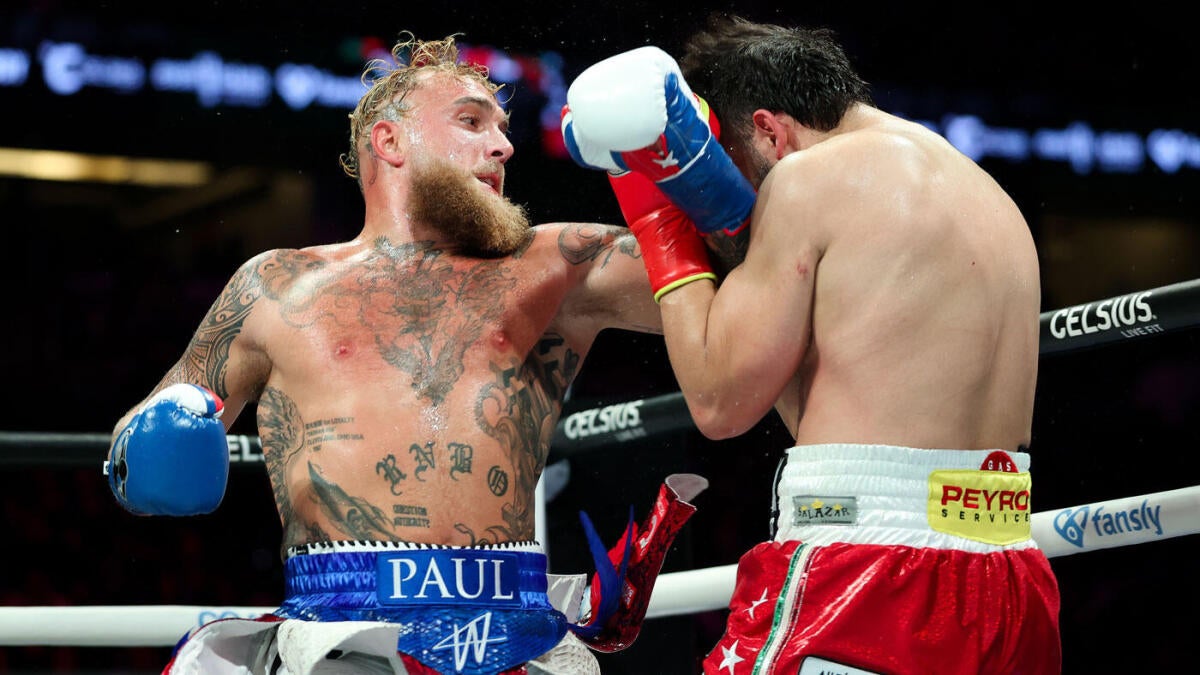Jake Paul’s recent victory over Julio Cesar Chavez Jr. at the Honda Center in Anaheim, California, was a landmark event in the cruiserweight division and a significant milestone in Paul’s unconventional boxing career. The 10-round cruiserweight contest showcased Paul’s ability to compete against a former world champion, further solidifying his position in the boxing world. This fight, broadcast on pay-per-view, drew considerable attention, bridging the gap between celebrity boxing and traditional combat sports.
Background and Stakes
Jake Paul, a former social media personality turned professional boxer, has steadily built his record to 12-1. His opponent, Julio Cesar Chavez Jr., is a seasoned boxer with a storied pedigree as the son of the legendary Julio Cesar Chavez Sr. and a former WBC middleweight champion. For Paul, defeating Chavez Jr. was not just about securing a win but about gaining credibility in the boxing world and positioning himself for future title contention. The stakes were high, with the cruiserweight fight (200 lbs) over 10 rounds serving as a critical test of Paul’s skills and endurance.
Fight Overview and Strategy
From the outset, Jake Paul dominated the early rounds, utilizing his reach and movement to keep Chavez Jr. off balance. Reports and round-by-round analyses indicate that Paul was aggressive and effective, employing a strong jab, consistent body work, and sharp combinations that visibly affected Chavez Jr. Paul’s corner emphasized maintaining distance and striking cleanly, while Chavez Jr. initially struggled to find an effective counterstrategy. This led to a wide lead on the judges’ scorecards, with Paul controlling at least the first eight rounds.
Julio Cesar Chavez Jr.’s Late Surge
In the final two rounds, Chavez Jr. mounted a resurgence, showcasing flashes of the championship form that had earned him his titles in the past. This late push included sharper punches, increased aggressiveness, and attempts to corner Paul. However, despite this effort, Chavez Jr. was unable to reverse the tide enough to challenge Paul’s clear lead. The fatigue and earlier punishment were evident, limiting his effectiveness in these closing rounds.
Judges’ Decision and Scorecards
The unanimous decision awarded to Jake Paul was wide but not a shutout, reflecting Chavez Jr.’s late-round improvement. The official scorecards read 99-91, 98-92, and 97-93, indicating strong judge agreement about Paul’s dominance in most rounds. This decision solidifies Paul’s status with a credible and definitive win over a former world champion, a feat which many doubted possible given his relative inexperience and non-traditional route into boxing.
Impact on Jake Paul’s Boxing Career
This victory is arguably the most significant of Paul’s career to date for several reasons. First, defeating a recognized boxer with substantial professional experience places Paul in a new category within the sport. His claim to future title opportunities becomes harder to dismiss. Second, Paul has publicly stated his ambition to become a world champion. Defeating Chavez Jr. opens doors to higher-profile fights against elite boxers in the cruiserweight or even heavyweight divisions. Finally, the fight attracted broad attention, from boxing purists curious about Paul’s legitimacy to casual fans drawn by his celebrity status. This event further blurs the lines between traditional boxing audiences and mainstream entertainment.
Broader Context and Boxing Landscape
Jake Paul’s ascent raises interesting questions about the evolving landscape of boxing. His ability to draw large pay-per-view numbers and hold his own against legitimate fighters is pushing promoters and governing bodies to reassess how fights are arranged and marketed. Critics may still question the depth of Paul’s skills or the quality of his opposition compared to established pros, but his calculated rise shows a blend of savvy marketing and undeniable in-ring progress.
Conclusion: A Milestone With Future Promise
Jake Paul’s unanimous decision win over Julio Cesar Chavez Jr. marked a crucial turning point in his boxing career. By dominating a former world champion over 10 rounds, Paul moved beyond the realm of celebrity boxing into a position where his ambitions for world titles are no longer viewed as mere publicity stunts. This fight demonstrated Paul’s capacity to adapt, execute strategy, and withstand pressure—qualities essential for success at higher levels. While Chavez Jr.’s late surge hinted at resilience, Paul’s consistent control and tactical execution were decisive.
As Paul eyes bigger fights and possible world titles, this victory will be remembered as the moment he crossed a threshold in professional boxing, signaling that his place in the sport is more than just a novelty. The challenge now is sustaining this momentum against elite competition, cementing his place in boxing history not for his fame, but for his skill.

